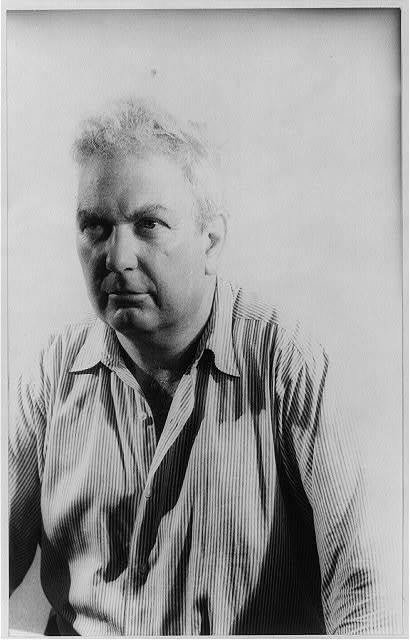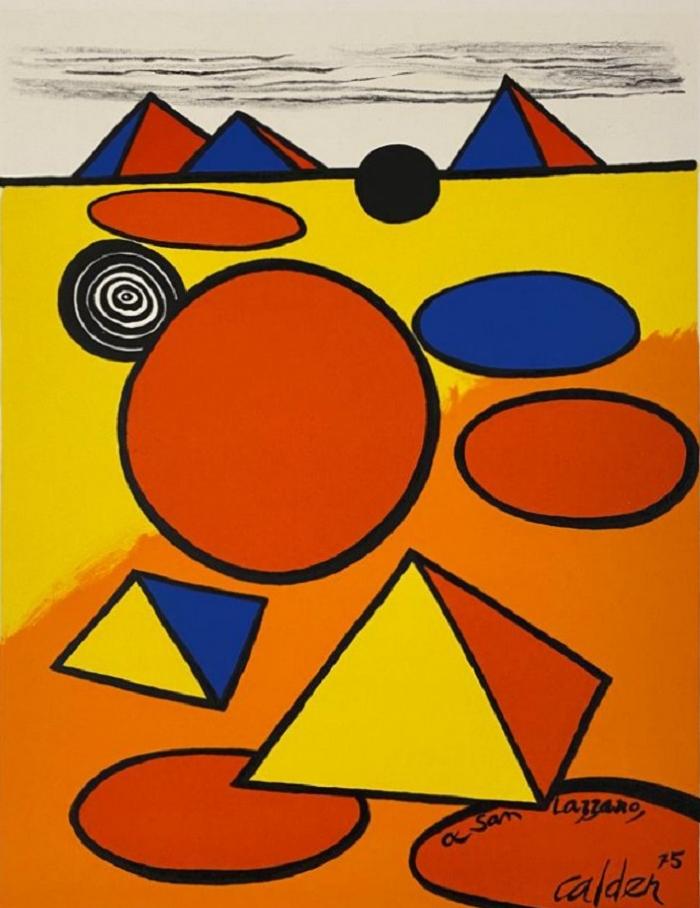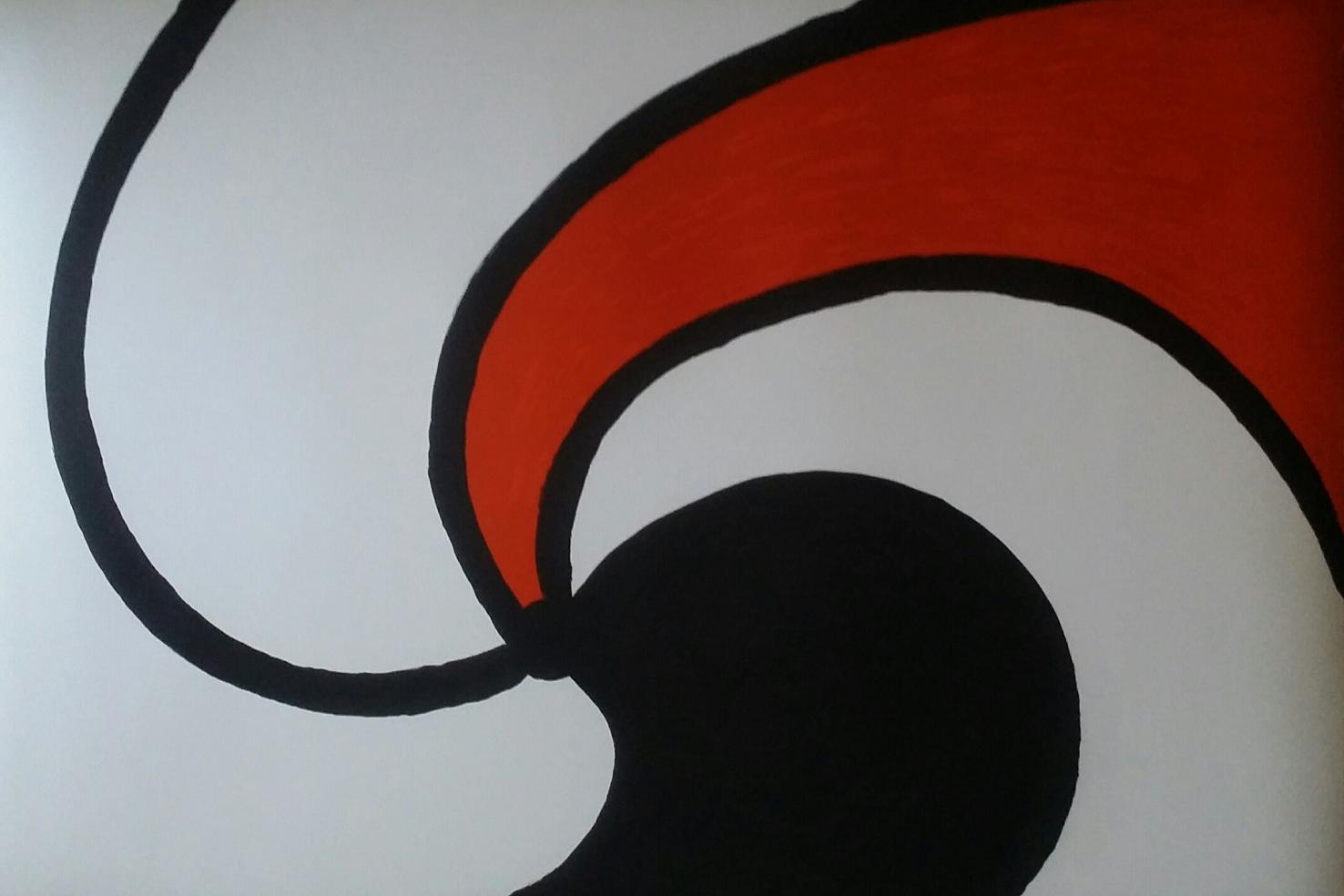Alexander Calder revolutionized sculpture at a time when art was predominantly static. Close to Duchamp and Mondrian, he also approached his art from the angle of lithography. He has notably produced many engraved works for the Maeght editions. This week, discover a selection of colorful prints signed by the artist.
From sculpture is born engraving
“ Why should art be static? Looking at an abstract work, be it a sculpture or a painting, we see an exciting set of planes, spheres, cores without any meaning. He may be perfect, but he is still still. The next step in sculpture is movement. These few words sum up Calder's philosophy. The artist saw in his practice of sculpture a possibility of giving movement to something immobile.
His engraved work is the thematic continuity and a kind of counterpoint to his work as a sculptor. In 1947, he met Marguerite and Aimé Maeght at the International Surrealist Exhibition, in their gallery. Calder produces an original lithograph for the catalog prefaced by André Breton.
Alexander CALDER
Tribute to San Lazzaro
Original lithograph on Arches vellum
Signed in pencil and numbered 21/75
Publisher: 20th century, Paris, 1975
35.5 x 26 cm
For thirty years, Calder produced more than 200 lithographs or original etchings for the Maeght editions. He participates in particular in the editions of the review Derrière le Miroir (review comprising original lithographs and posters). In the lithograph, Homage to San Lazzaro , we find the shapes and tones dear to Calder: spheres, triangles, spirals, warm colors, blue… Most of the artist's prints are very colorful, but he does happen. that they are darker when using only aquatint. Some lithographs depending on the subject and the edition can reach up to 40,000 €.
Alexander Calder

Born in 1898 in Pennsylvania into a family of artists, Alexander Calder has been rocked by art since his childhood. His parents set up a small workshop in the cellar of their house so that he could create his first works there.
In 1923, he enrolled in an art school in New York and three years later, he went to Paris to live off his passion. There he meets a toy merchant who makes him want to experiment with new techniques. He then began to work with wire, wood and other materials. These crafts led him to create the Circus Calder based on articulated toys and animated figurines.
During this period, he worked with wire and made portraits for his friends such as Fernand Léger or Kiki de Montparnasse. He befriended Piet Mondrian, whose works attracted him to abstraction. Fascinated by the cosmos, he decides to set in motion a new abstract art that Marcel Duchamp will call “mobiles” in 1932. These are sculptures made from wire, an electrical system, spheres and geometric shapes. or abstract inspired by nature. In contrast, he also produced the “stabiles”, still sculpted works. From 1940, the artist exhibited his works in several prestigious institutions and events such as the Museum of Art in 1943 or the Venice Biennale in 1952.
Alexander CALDER
Spiral Nebula , 1970
Original lithograph in colors signed in pencil
In 1953, he had a house built in Saché, in the Tours region, in which he produced very large paintings, prints and sculptures. The Calder Foundation in New York continues to bring the artist's art to life. Forty-five years after her death, she has uploaded 1,400 works by the artist and an interactive map to locate her sculptures around the world.
![Cette semaine, découvrez une sélection d'estampes hautes en couleur d'Alexander Calder [Lire la suite]](https://tools.plazzart.com/images/blog/uploads/2021-09-15/_cropped_20210717_160011119_ios.jpg)


